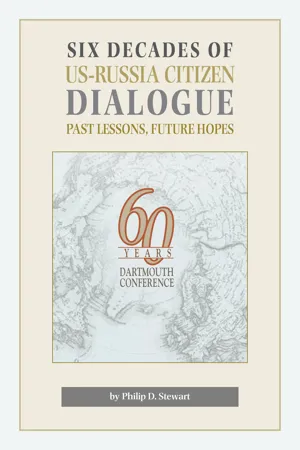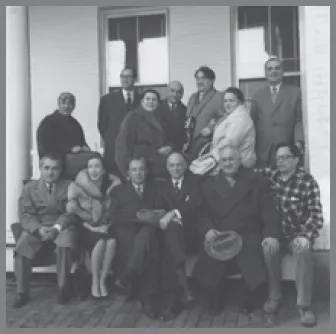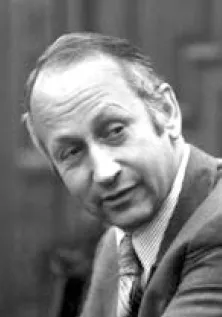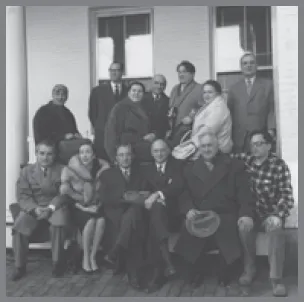CHAPTER ONE
Citizens Meeting the Challenges of a Relationship in Crisis
THE DARTMOUTH CONFERENCE is a distinct and innovative form of citizen diplomacy. For over 60 years, it has developed a unique experience and a unique methodology for involving Russian and American citizens in the process of finding political solutions and compromises to the issues that divide them and threaten world peace. This is what has determined the relevance of the conference in these turbulent times.
In the mid-20th century, the United States and the Soviet Union recognized that neither could achieve security on its own. Trying to go it alone has led only to costly and dangerous arms races. Negotiated limitations on arms, especially nuclear weapons, have played a critical role in preventing war. Even though these two nations often seem at odds on the world stage and citizens of both often view each other with mistrust, they do hold shared interests, such as climate change, pandemics, and the fight against terrorism.
The question is not whether to have a relationship with Russia. We have one and, today, early in the 21st century, it is a very difficult and dangerous one. When official relations limit the ability of our governments to address issues that divide us or explore the potential for cooperation, citizens have a special obligation to engage in dialogue between our nations. Through this dialogue, participants seek knowledge of and understanding by each side about what motivates the other, the values and objectives of each, and how each side sees issues of importance and its global role. The Dartmouth Conference is a forum for open, creative thinking about how to address matters important to each country and to the world, to identify opportunities to cooperate where our interests coincide, and to suggest strategies for managing the differences or disputes that challenge our capacity for constructive interaction.
Both the Russian and US governments have always welcomed the jointly developed ideas, insights, understandings—and, at times, the proposals—that emerge from each session of this dialogue. This brief book tells the story of Dartmouth’s work during its first 60 years and suggests an agenda for its future efforts.
The policies of nations are conducted largely through governmental institutions, but it is the human beings in those institutions who give form and shape to aspirations for these policies. Conflict among states arises when the interests, policies, and actions of one or more states, as shaped and interpreted by the human beings leading them, is perceived by other states as threats to their interests, power, or policies. For 60 years, the participants of the Dartmouth Conference worked in a very turbulent world. Soviet-US relations reached a dangerous point during the Cold War and required enormous efforts on both sides to make the situation safer and more predictable.
Now, despite the past years and accumulated experience, relations between the United States and Russia have deteriorated again. The world is no safer either. It is full of various conflicts—both interstate and internal—complicated by foreign interference. Among them are conflicts in Yemen, Syria, Libya, Ukraine, the Caucasus, Africa, and Latin America. All these conflicts are very difficult to resolve. In this book, we argue for a more productive way to deal with conflicts.
The Idea Was Born
Norman Cousins, editor for 35 years of the Saturday Review, a founder of the antinuclear SANE movement (officially, the National Committee for a SANE Nuclear Policy), and a committed believer that world peace could be achieved only through world government, was the creator and strongest proponent for the idea of a conference that would bring together high-level citizens from the two antagonists of the Cold War. His concept was simple, if grand: to engage citizens from the two major nuclear powers in a conversation on how to prevent a nuclear war.
Building upon a personal relationship with President Dwight D. Eisenhower dating from the late 1940s, Cousins traveled to Moscow with Eisenhower’s blessing in May 1959 and proposed his idea to the Soviet Peace Committee. While his humor evoked laughs, coolness met his harsh criticism of many aspects of Soviet policy, particularly regarding nuclear testing and human rights. While promised a response, Cousins could not have left Moscow with much reason for hope. As long-time Russian interpreter and conference coordinator Alice (Alla) Bobrysheva reported in her own memoir, since this would be the first meeting organized by the Peace Committee with Americans who were not pro-Soviet, the committee leadership was deeply skeptical that this invitation would be accepted.1 Nevertheless, the request was routed through the Central Committee’s International Department, to whom the Peace Committee reported. One can only imagine, then, the surprised reactions when, in October 1959, the Peace Committee received approval to move ahead with this meeting. Bobrysheva is convinced that this decision was possible only through the personal intervention of Soviet leader Nikita Khrushchev. Cousins’ subsequent personal meetings with Khrushchev, as well as a second meeting held just six months after the first, took place at the Crimean resort reserved for high-level party officials. The fact that the resort was located next door to Khrushchev’s own villa indicates the very high level of Soviet interest.
Norman Cousins
In the spring of 1960, as preparations advanced for the first meeting, to be held at Dartmouth College in Hanover, New Hampshire, participants negotiated the fundamental principles that have shaped this dialogue throughout its first 60 years. Many of these arose from Cousins’ deep insights into what it takes to enable effective human discourse, especially across borders of deep hostility and suspicion. The first was that everyone would participate as a private citizen, not as a representative of a group or organization, whether private or official. The idea behind this principle was that participants as private citizens would feel less constrained by official policy and more likely to recognize and respond to fundamental human values. The challenge, however, was that, in the Soviet Union, even the word for “private” had little meaning. Both law and practice subordinated everyone’s lives and interests to those of the state. Nevertheless, in the end, both sides agreed that everyone would participate strictly in a personal, or “private,” capacity, irrespective of their usually high-level official positions.
Other principles were designed to create an environment that would maximize the potential for developing relationships on a human level while making it possible to raise and confront the most difficult and contentious issues frankly and openly. Keeping meetings private and off the record was meant to create a safe environment free from publicity. Stretching the meetings over five or more days, with additional meetings before and following the main sessions, provided ample free time for private conversations and coming to know one another as whole human beings.
But it was in his selection of US participants that Cousins showed some of his keenest insight. The question was how to create an image of the United States sufficiently powerful and persuasive to break through deeply embedded Soviet stereotypes of the “imperialist” West. Cousins’ answer was to involve people whose careers and deepest beliefs embodied both the diversity and the breadth of the American experience and character. Examples included William Benton, a successful businessperson and former US senator; Grenville Clark, an attorney; playwright Russell Crouse; and Agnes DeMille, a ballerina and choreographer. Bobrysheva wrote of the impression two of them made on her:
[During a harsh argument about disarmament] Grenville Clark, highly respected in the legal community and among leading public figures … stood up and, among other things, declared that Americans deeply respected the Soviets for their courageous struggle against fascism during World War II. Americans, he said, would never forget how many lives the Soviet people lost in that struggle. Everyone stood up, and for a moment, there was a deep silence, which gave way to unanimous and sustained applause. From then on, the tone of the discussions changed markedly….
As a little girl [Agnes DeMille] … met the great Russian ballerina Anna Pavlova and was captivated by her skill as a dancer. It made her think about the people and the Russian culture that had produced an artist of such genius. It was then, she said, that she decided to become a ballerina.2
Bobrysheva cited these two cases “because they illustrate the kind of human relations breakthrough that, in my opinion, was no less important than the political value of starting the Dartmouth process.”
Never was there the expectation that the Dartmouth Conference would directly influence official policy; rather, from the beginning, the hope was to shape ideas in the policy environment in both countries, in this sense, working with governments, yet separately and independently. From the very first Dartmouth meeting and continuing until today, this has meant including participants with both breadth and depth in the core issues impacting the US-Soviet relationship but who would also draw from, and contribute to, the stream of ideas, concerns, and concepts that form the context and often the content of official policy.
Of course, both the Soviets and the Americans understood well the importance of public opinion in the relationship and the potential of the Dartmouth Conference to shape it. However, the two sides approached the public’s role in nearly diametrically opposed ways.
The Americans tended to see a two-way relationship. On the one hand, nearly all US participants accepted it as part of their responsibility to raise concerns that were prevalent in the US public. These ranged from criticizing Soviet treatment of prominent authors such as Alexander Solzhenitsyn to pressing the case for emigration of Soviet Jews, as well as broader human rights issues. On the other hand, by including in the delegation prominent US writers and journalists from papers such as the New York Times, the Washington Post, and the International Herald Tribune, the hope was that Americans might come to a more nuanced, less stereotyped, and more complex picture of Soviet (and now Russian) reality and policy.
The Soviet organizers, or at least the Communist Party International Department to which they reported, initially sought to make the Dartmouth Conference an influential forum both for promoting the official Soviet policy line and for denouncing US policies and actions that the Soviets found threatening or unacceptable. The longest-serving and most prominent Soviet propaganda voice was that of Yuri Zhukov, Pravda political commentator. While the tension between genuine policy concerns and propaganda remained until nearly the end of the Soviet Union, by the early 1980s, it became accepted practice to limit such “dumping,” as it came to be called, to the first hour of any plenary session.3
_______________________
CHAPTER TWO
The Dartmouth Conference: The First 30 Years (1960-1990)
The 1960s: Learning to Talk Together
To understand the challenge and the impact of the first Dartmouth Conferences, it helps to recall the atmosphere of the times and the nature of the Soviet-US relationship. In 1957, Moscow had launched the first successful satellite into space, an event that not only shocked Americans, but convinced many that the Soviet Union had a substantial lead in science and technology over the United States. Some US economists even predicted that within 20 years, the Soviet Union’s planned economy would enable them to outstrip US gross domestic product. Given the raging contest between the two superpowers to achieve security through deployment of nuclear weapons on bombers, on rockets, and on submarines, this event profoundly shook US confidence. Indeed, during the 1960 presidential campaign, John F. Kennedy famously argued that the Eisenhower administration had permitted a “missile gap,” leaving Russia with considerably more nuclear-armed missiles than the United States had.
As if this were not worrisome enough, the United States had extremely limited knowledge of the Soviet Union in general, let alone of its military planning and intentions. And no wonder, since from US recognition of the Soviet Union in 1933 until the signing of the first Soviet-United States Cultural Exchange Agreement in 1958, almost the only contacts between our countries were at the official level. Even diplomats had almost no interaction with ordinary Soviet citizens. Ideology on each side portrayed the other as committed to its enemy’s destruction, perceptions only reinforced by Khrushchev’s 1956 boast, “We will bury you!” In the United States, the early 1950s hysteria created by Senator Joseph McCarthy’s assertion that “communists” occupied even the highest reaches of the US government had only begun to wane.
It is not surprising, then, that simply bringing such a group together on the bucolic campus of Dartmouth College in Hanover, New Hampshire, at the end of October 1960 was seen as a significant achievement. The theory was simple: highly experienced, knowledgeable, and committed people talking together in a private setting would soon recognize the others as human beings, and this would form the basis for addressing fundamental human challenges together. Initially, reality seemed to contradict this assumption. Right from the start, the sides seemed so far apart that they almost appeared to come from two different worlds. But the conference design, combined with the determination of the participants, achieved a breakthrough. Bobrysheva captured the moment:
Sharing the same space during the entire conference contributed greatly to the establishment of new human relationships. Sitting together at one table during meals, walking together to the conference room, enjoying a stroll together on the campus grounds, playing a game of tennis during lunch break—all this led to discovering in a recent adversary a friendly human being with many similar feelings and problems. Political issues were discussed, not with enemies, but with thoughtful scholars deeply concerned about the future of their countries and the world.4
One of the hopes behind the Dartmouth Conference was that such contacts, across time, might help to open the closed Soviet society, or at least some of its elite, to broader ways of thinking and questioning. While no one would venture profound claims in this regard, even after 60 years, Bobrysheva offers at least one such personal testimony:
The great gift I received from the first Dartmouth Conference, and which I proudly cherished for the following 30 years, was my association with Norman Cousins….
Meeting Norman Cousins was like opening a window onto a wider world, with more issues to think about and resolve than I had previously confronted. He introduced me to a wider range of solutions. Every meeting with him in the 30 years that followed that first conference left me enriched by his ideas, his energy, and his dedication to improving life on our planet.5
For many participants, Dartmouth III, held at the Phillips Academy in Andover, Massachusetts, from October 21 to 27, 1962, confirmed the value of the Dartmouth Conference and its unique qualities. What made this session so formative...



